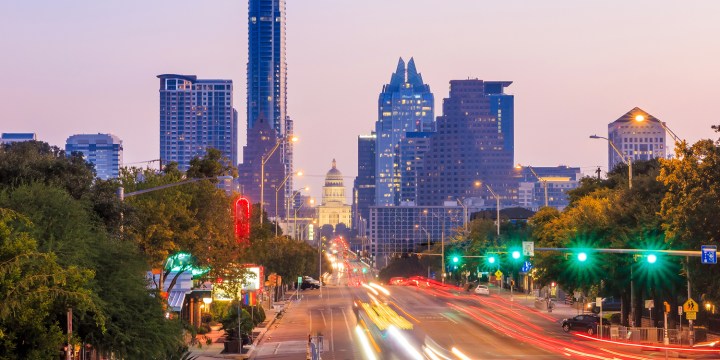
Companies that are pioneering new solutions include major brands like Bosch, Ford, Nissan, and Ericsson. They and others will be on hand to explore new opportunities in smart transportation, smart grids, public safety, cybersecurity, health care, artificial intelligence, virtual reality (VR) and augmented reality (AR), and more.
This year, more than 11,000 square feet of the show, which is held annually in Las Vegas, will be dedicated to The Smart Cities Marketplace, presented by the CTA, the industry’s trade organization, and Deloitte. It will feature smart city-enabling technology and solutions. Other exhibitors demonstrating the potential for smart cities technology include the European Commission, the Holland Startup Pavilion, and the cities of Berlin, Quebec and Las Vegas.
A myriad of topics
Session topics will include “Energy Consumption and Distribution in Smart Cities,” “Paving the Way for Connected Emergency Vehicles,” and “Consumer IoT [Internet of Things] Changing the Game for Emergency Responders.” Other sessions will examine how smart cities can leverage sensor networks, human intelligence, and data gathering to create and share actionable intelligence, which is being used in smart cities for everything from smarter emergency response to parking programs.
“Smart Cities at CES 2018 and our related conference programming are a natural extension of the show’s focus on innovation,” said Steve Koenig, senior director for market research with the Consumer Technology Association to the HuffPost. “CTA projects global spending on smart cities will reach $34.35 billion by 2020, so we think it’s important to have a dedicated conference program and exhibition focused on this global initiative. This remarkable growth will influence tech industry growth, change the way we think about cities and address global ills. We want to help our attendees gain a better and more comprehensive sense of this trend and help encourage the continued development of smart cities.”
5G technology
The hot topics related to smart cities that will be explored at CES include topics like equitable innovation and inclusivity, electric vehicle (EV) infrastructure expansion, cybersecurity, and microtransit.
However, the subject that is currently burning all the oxygen in the room when it comes to smart cities is 5G technology. While most consumers think this emerging telecommunications standard will simply mean faster smartphones – Qualcomm has already hit a speed of 1 gigabyte per second (Gbps) – the technology can have a transformative effect on smart city grids. Research suggests that smart city solutions applied to traffic management and electrical grids could produce $160 billion in savings and benefits through reductions in energy use, traffic congestion, and fuel costs.

Qualcomm, Baidu, Verizon and SDxCentral are set to discuss “Mobile Innovation: How 5G Will Enable the Future” at CES 2018. This keynote session will explore how 5G networks can enable innovations like self-driving vehicles, AR and VR, breakthroughs in health care, IoT data applications, and more. U.S. Transportation Secretary Elaine Chao will also headline the Smart Cities event.
“The tech community is committed to and passionate about changing lives for the better, and smart cities have the potential to address the need for more sustainable and livable cities around the world, said Koenig. “With the Internet of Things as a foundation, technologies such as automated street lighting, smart energy meters, parking assistance apps and sensors have the ability to make cities safer, more efficient, and more accessible. The United Nations projects 66 percent of the world’s population will live in urban areas by 2050 — so now is the time to harness technology’s potential to improve urban life.”
Real-world potential
The real-world applications of smart cities technology are as diverse as the needs of any given community. Kansas City, Missouri-based Site 1001 uses core building information, building systems, and sensor data in combination with a machine learning engine to analyze building operations and produce efficiencies.

Multinational firm Connecthings operates a global network of beacons in public spaces to transform massive urban points of contact and locations such as train stations, airports and public venues into smart, connected hubs that communicate with the smartphones of citizens and visitors. By analyzing and broadcasting smart cities data, the company can help smartphone users improve their daily commute, alert them of emergencies, and more. The company has set up more than 60 smart cities in Europe and South America, and is currently expanding into the U.S. with projects in Austin, Texas, and New York City.
List, a research institute of France-based CEA Tech,will demonstrate its new multitask deep neural network algorithm called Deep Manta, which is capable of performing advanced and efficient real-time analysis of video streams. The algorithm is a real-world demonstration of a new category of artificial intelligence called multitask deep learning that targets visual object recognition in smart cities.
The applications may be diverse but the goal is the same — to leverage artificial intelligence and data analytics to correlate the information collected from digitally connected people, devices, vehicles, transportation facilities, and other sources to make the urban experience more efficient and user friendly.
“We are witnessing firsthand cities worldwide exploring the opportunities holistic smart city initiatives can create for the public and private sectors, and for the people that live in increasingly connected urban corridors,” said John Skowron, principal for Deloitte Consulting LLP and global smart city leader. “Across North America, Europe, Asia, and the Middle East, city planners, entrepreneurs and business leaders are working in collaboration to make the promises smart cities hold a reality.”


